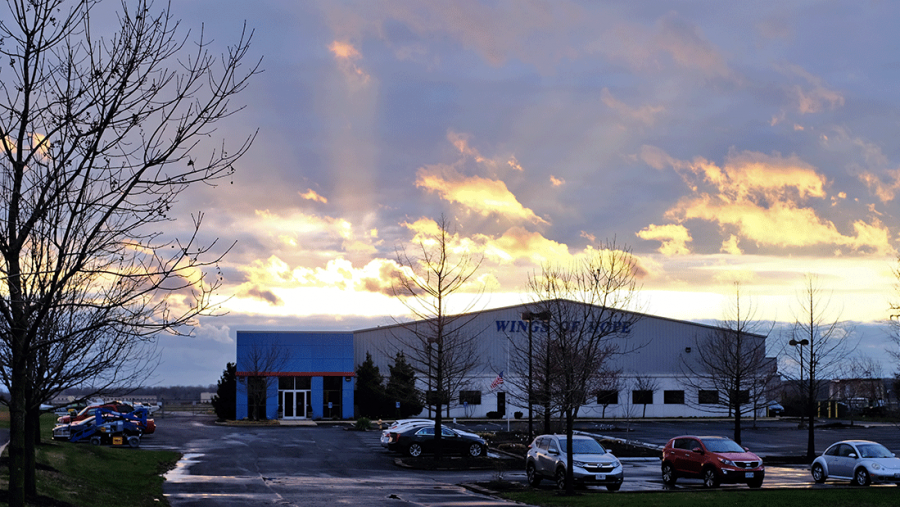
Frequently Asked Questions
General
Wings of Hope operates with a very small paid staff and a very large volunteer base. This enables us to spend at least 86 cents of every dollar directly on programming. We are always looking for volunteer pilots, nurses and medics to support our MAT Program. But you don’t have to be a pilot to help us. We use volunteers in administrative roles (answering the phone, stuffing envelopes, data entry, etc.) and to help with special events. We use volunteers with special skills like accounting, finance and marketing to support our fundraising efforts. We even use volunteers to keep our hangar and grounds looking great. If you would like to volunteer with us, just give us a call at 636-537-1302.
Check out our website at wingsofhope.ngo or our Facebook page at www.facebook.com/wingsofhopeinc
Medical Relief & Air Transport (MAT) Program
When we fly a patient in one of our aircraft, we have a 500 to 800 mile radius from our headquarters in St. Louis because this is the distance our planes can fly without stopping to refuel. In rare instances, we will exceed this distance by making a pit stop to refuel on the way.
We have three planes dedicated to the MAT Program: one Navajo and two Piper Senecas. Each is equipped to accommodate a stretcher, a wheelchair and medical equipment. We maintain these planes to strict safety standards, using a team of paid and volunteer mechanics. We can proudly state that we have a 100% safety record transporting patients to care.
The majority of our MAT patients are children, but we do transport adults. Some common cases are:
- Babies with clubfeet and cleft palates
- Children with rare forms of cancer and immune disorders who cannot fly commercially due to their compromised immune systems
- Individuals with rare diseases that require specialty care not available near their homes
There is no limit to the types of conditions our patients have. The common denominator is that they lack access to the care they need to heal and to hope. We use our MAT Program to provide them that access.
Global Programs
Currently, we are active in eight countries outside of the U.S.: Belize, Cambodia, Colombia, Papua New Guinea, Paraguay, South Africa, Tanzania and Zambia. Since our founding in 1963, we have worked in over 50 countries.
SOAR into STEM
A five-week, hands-on STEM learning experience that provides high school students project-based learning, connections to STEM curriculum; and a front-row seat into the workings of a global aviation nonprofit using airplanes to change and save lives.
The course is open to high school students who are interested in exploring career paths in aviation and understanding how aviation is used in humanitarian work. The program mission is to provide equitable access to aviation and STEM education, with a focus on serving students from under-served and underrepresented communities.
Experienced STEM educators, working and retired professionals representing a wide range of aviation and STEM-related experience — and Wings of Hope volunteers, many of whom are trained pilots and mechanics.
Students participate in high energy and engaging STEM and aviation project-based activities, enriched by a series of expert presentations. Highlights include:
- Hands-on maintenance, repair and modification of an airplane
- Experiencing a flight simulator
- Piloting a small-engine aircraft (closely supervised by a certified flight instructor)
- Piloting a drone through an obstacle course
- Access to industry experts, including guest speakers from Boeing, Wings of Hope pilots and others sharing career-path information
Wings of Hope’s world headquarters in Chesterfield and other locations on the Spirit of St. Louis Airport grounds.
The connection between an aviation nonprofit and a STEM program for students may not seem obvious – but it makes perfect sense to us for two reasons:
- We rely on highly skilled volunteer pilots and mechanics to fly our missions and keep our planes safe. This makes the predicted pilot and mechanic shortage especially troubling to us. By turning students on to careers in aviation, we are doing our part to start filling the pipeline with future pilots and mechanics.
- Students work on airplanes destined for use in the Wings of Hope mission field. That’s where we connect STEM learning to service learning – and show students how what they’re learning in the classroom can make a difference in the world.
Check out the SOAR into STEM page or call 636-537-1302. School districts can apply for SOAR into STEM partnership or field trips, classroom visits, and other educational opportunities.
